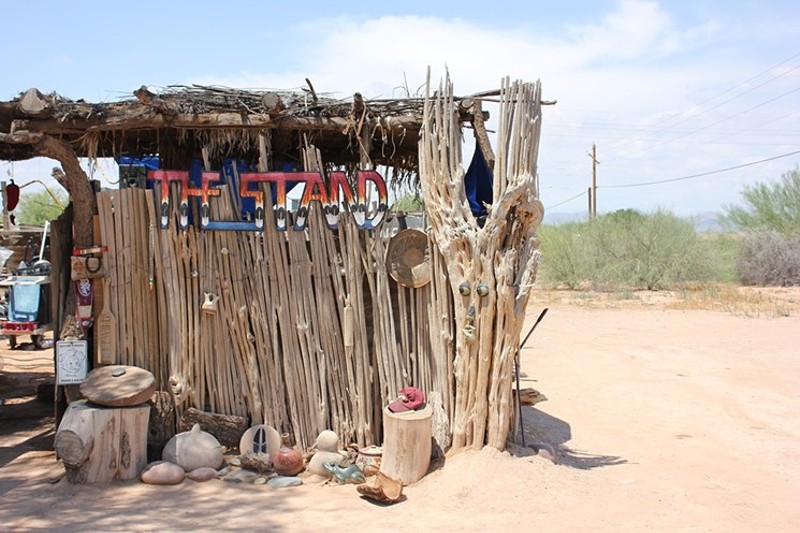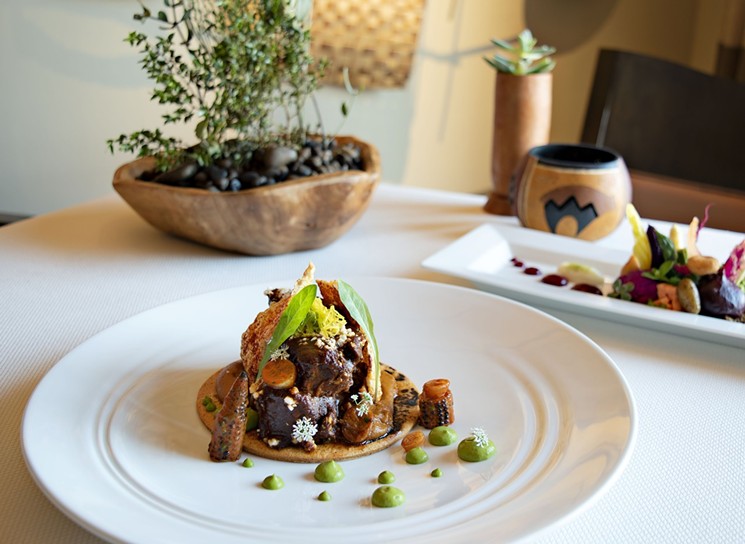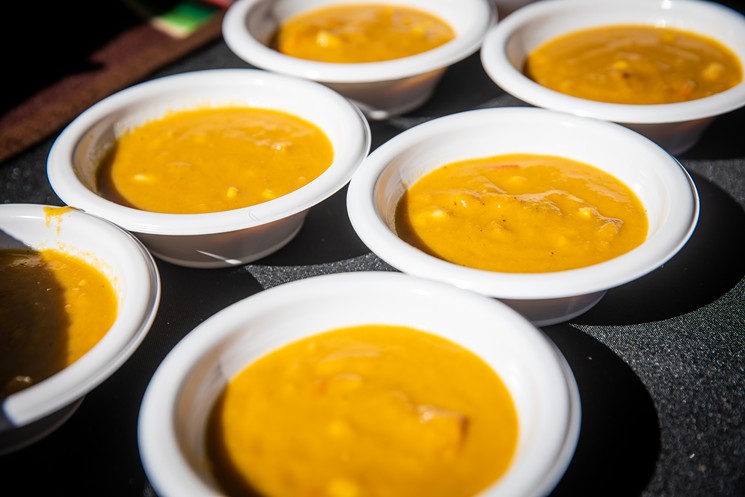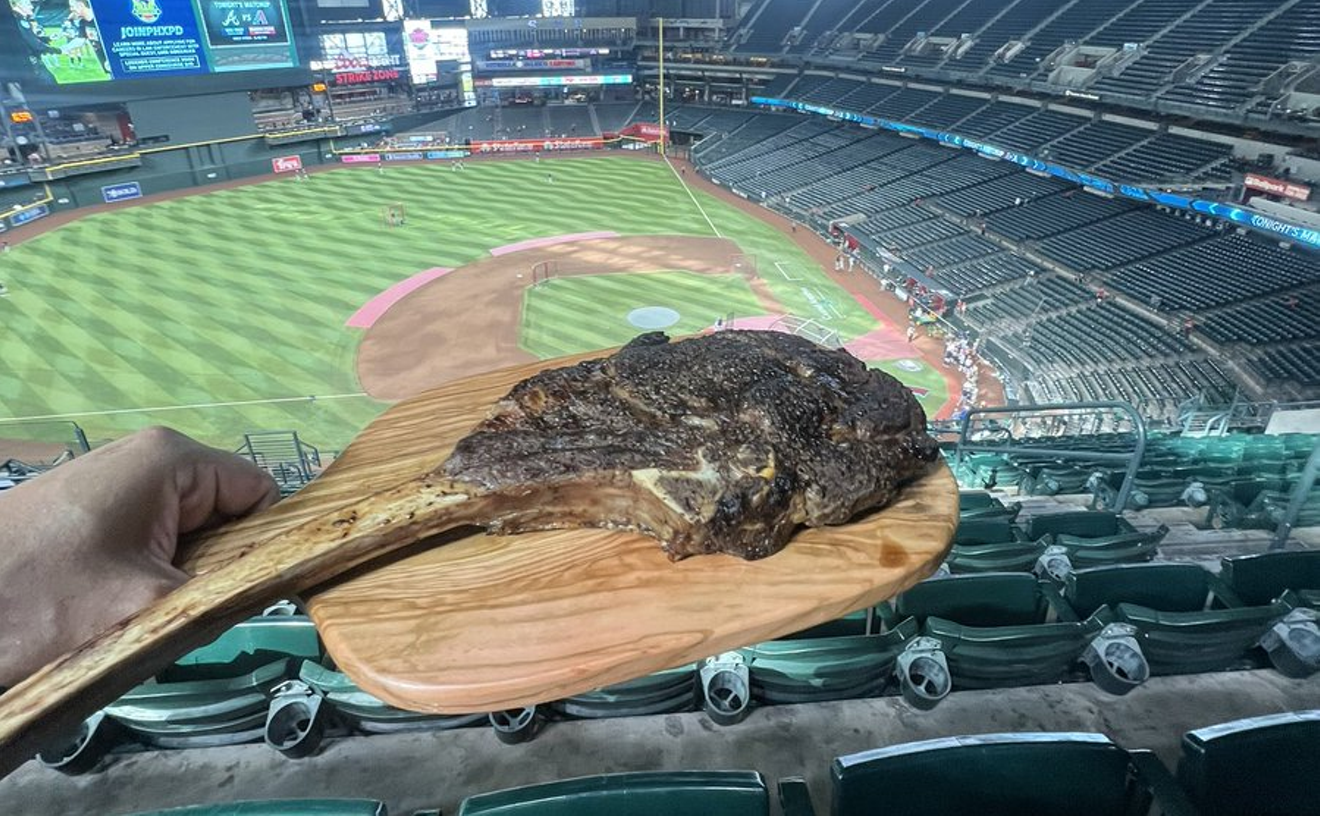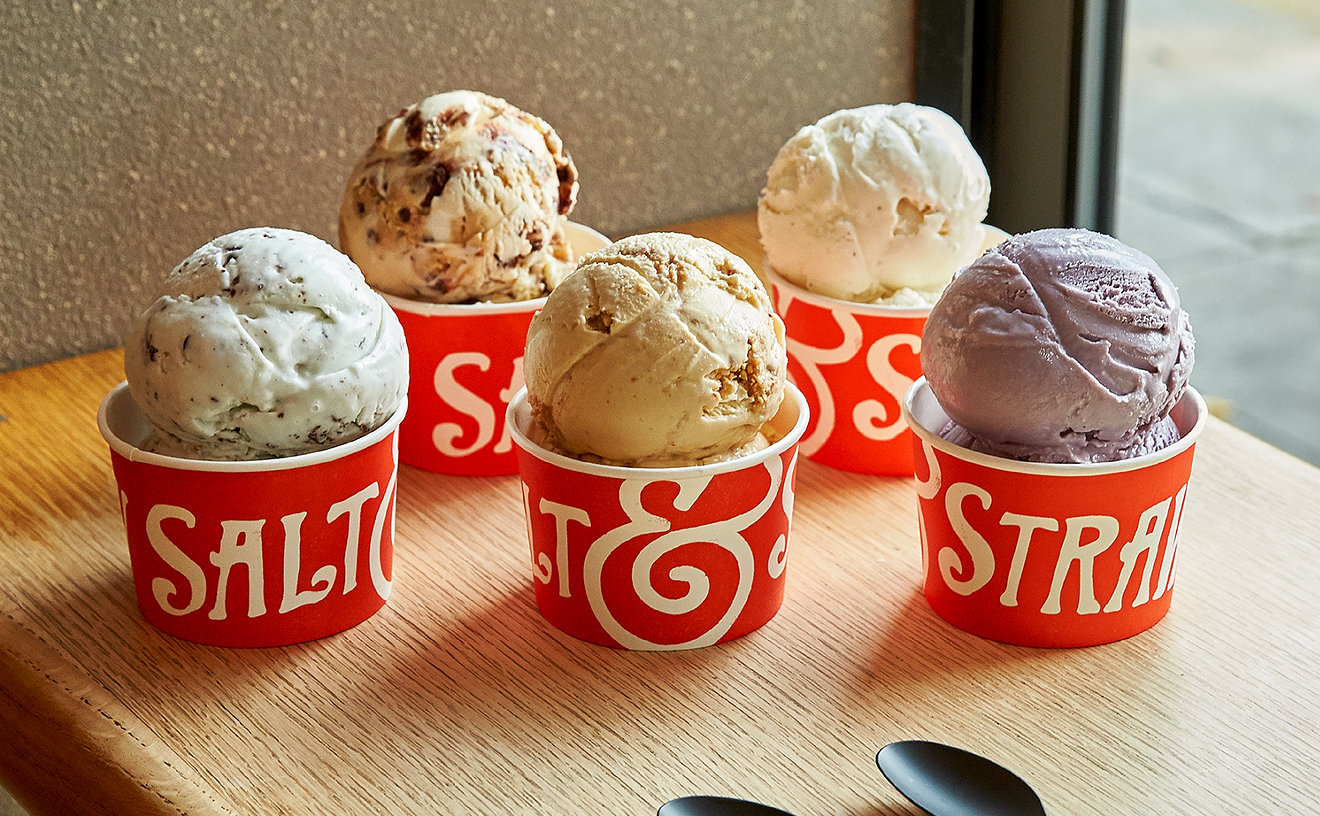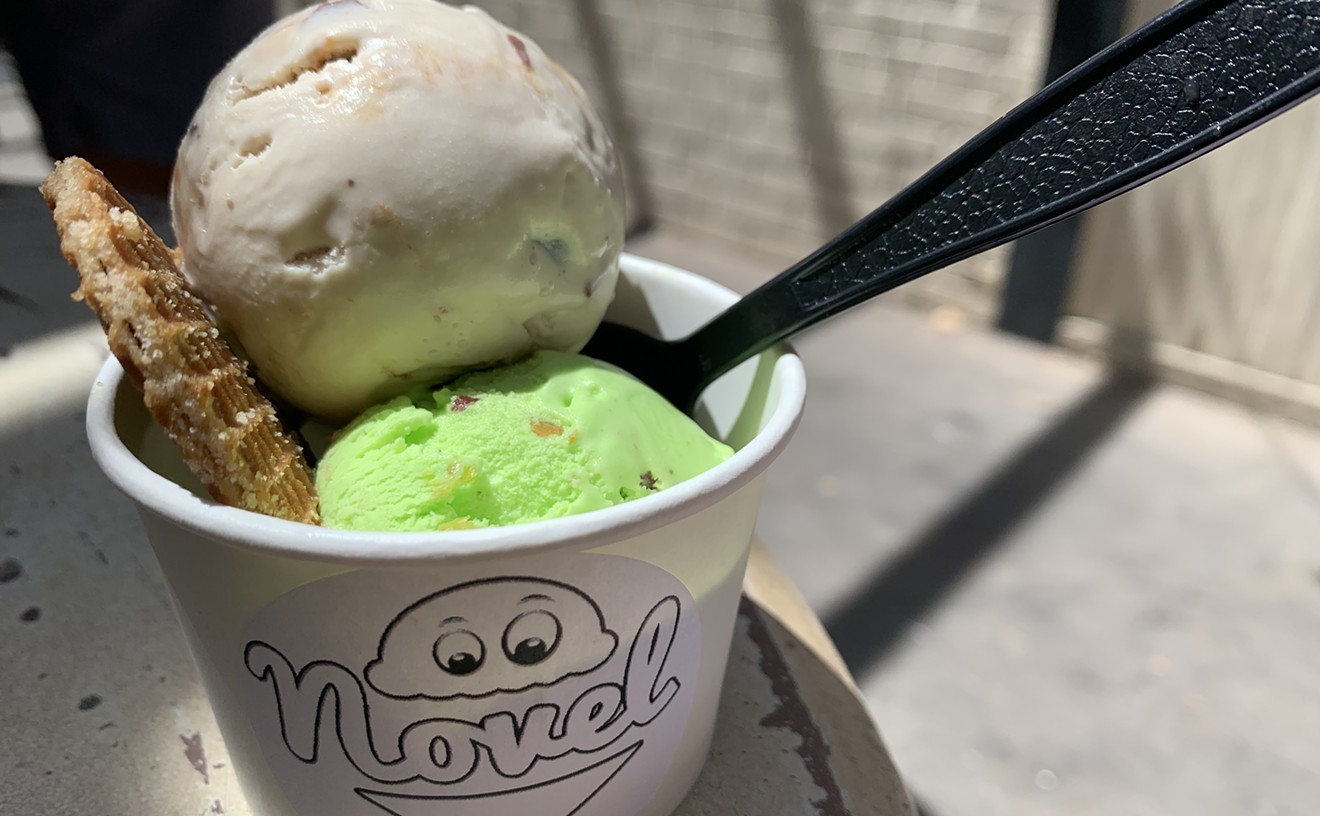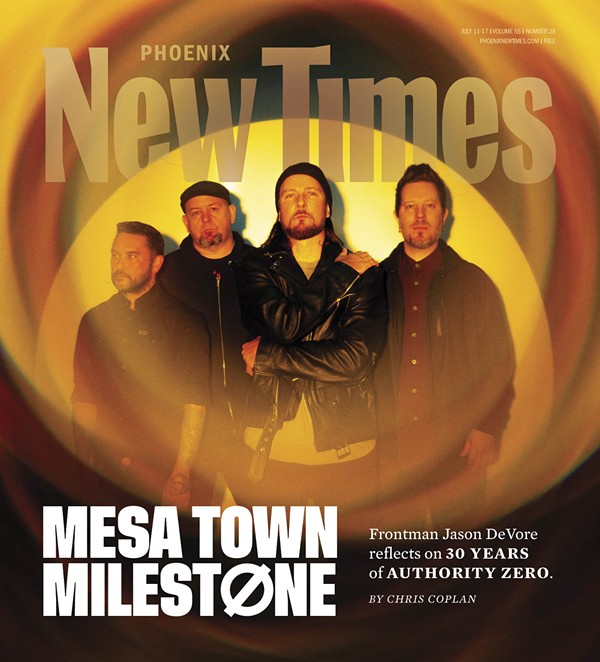COMMUNITY TRUCKS AND STANDS
The Stand
3996 North Alma School Road, Salt River Pima-Maricopa Indian CommunityOne of the great food experiences to be had in the Valley awaits at this outdoor kitchen, where, with incredible endurance, Tohono O’odham cook Cindy Washington forks frybread in a structure made of cactus rib and arrowroot. At The Stand, tunes drift out over the dirt where you wait, smelling dough, imagining chile, hearing the crackle of hot oil. The distant mountains northeast and east of our metro area snake around. Frybread and frybread tacos are popular orders. Red chile is rich, beefy, and amply portioned.
Red Feather Cafe
Indian Route 24, SacatonWednesdays and Fridays, this family-owned truck parks in Sacaton, on the Gila River Indian Reservation, in the food vendor lot across the way from the water tower climbing above Ocotillo Drive and Seed Farm Road. Every morning they’re open, Geri and Jerry Leos make chile from scratch. They prepare many iterations of frybread and ceme’t. As the lunch hour nears, a short, fast-moving line tends to form. On Friday, they dole out a menudo special that comes with fresh-baked yeasted bread.
Sunna Frybread Wagon
Indian Route 24, SacatonIn the same open gravel lot as Red Feather, the Sunna family sets up its “wagon,” a trailer from which it sells an array of similar traditional foods. These include beans, chiles, frybread, ceme’t, and a few others. Notably, the Sunnas have been known to cook up an “O’odham Burger,” a beef patty with generous fixings including a slathering of green chile, all clasped between two puffy discs of frybread. At Sunna Frybread Wagon, too, they often give the option of a combo uniting chile and beans on a single order of bread.
METRO PHOENIX FOOD TRUCKS
Emerson Fry Bread
Lately, this Valley favorite has been parking on East Glenrosa Avenue, just north of Phoenix Indian Medical Center. Its Jazzy, a carne asada Indian taco, has long been a local standout on the street food and taco scene. Early this year, operators Roxanne Wilson and Loren Emerson released a Navajo mutton sandwich, combining frybread, bits of Hatch chile, corn, and grill-kissed mutton leg — a soulful nod to Wilson’s heritage and the stands on Navajo Nation. Don’t miss Emerson Fry Bread's giant iced drinks, like prickly pear lemonade.Fry Bread Fanatics
The most creative Indigenous food truck in the Valley has been parking in Laveen and fusing Native American and Mexican foods. Fry Bread Fanatics' Mexican and Diné cook, Adriana Garcia, blankets green chile frybread enchiladas with toppings and laces them with crema. She buns a frybread-based take on the Sonoran hot dog. Her dessert frybreads are simply next level. They chameleon into numerous forms, taking the flavors of s’mores, churros, and pies like banana cream. Ask about her cart’s artwork. For one, the hummingbird represents Garcia’s late father, Diné, the source of her connection with traditional foods.RESTAURANTS
Fry Bread House
4545 North Seventh AvenueThe conversation about where to eat Indigenous foods begins with Fry Bread House, open since 1992 and one of the few Native-owned restaurants in metro Phoenix. Sadly, Tohono O’odham founder Cecilia Miller passed last spring. Now, her daughter Sandra Miller oversees the kitchen. Specialties center around frybread and ceme’t, a metal-born, sail-like tortilla that predates fry bread. These come many ways, including plain, beside hearty chiles, and as tacos or burritos. Fry Bread House has even served a deep-fried ceme’t in nacho form, and chocolate-drizzled frybread for dessert.
Kai Restaurant
5594 West Wild Horse Pass Boulevard, Chandler602-225-0100
At this formal, white-tablecloth restaurant, one of Arizona’s best of any kind, Indigenous ingredients from the Sonoran Desert and afar receive creative treatment, combining into high-concept dishes new to the world. Current head chef Ryan Swanson recently notched a James Beard semifinalist nomination for his kitchen’s work. Though Kai once featured more Indigenous chefs, its present incarnation continues to cook in the spirit of the Gila River Indian Community, where it is based. The kitchen exalts the work of Native farmers and foragers, turning cactus fruit into pie, dates into leather, bison bone marrow into crème brulee.
Heard Museum’s Courtyard Café*
2301 North Central AvenueThough this Heard Museum cafe is broadly “Southwestern-inspired,” there are plenty of ingredients and preparations that are Native or feature Native ingredients. These include a tepary bean hummus served with frybread, and a soup that unites the three ancient sisters — beans, squash, and corn. Ramona Farms provides many of the Indigenous ingredients, like wheat berries. Some of the cafe’s wines come from Native wineries. Frybreads even appear on the dessert menu, with ice cream.
*As of press, the cafe is still closed due to the pandemic.
POP-UPS
Jaren Bates
Wild: Arizona CuisineThough he isn’t now cooking in a brick-and-mortar eatery, Jaren Bates, raised on a farm in Navajo Nation, is the most creative Native chef in greater Phoenix. He hones his style constantly, pushing Indigenous Southwestern ingredients and dishes into new directions: Navajo Tea into vinegar, tepary beans into miso, steam corn into ice cream. Lately, he has been firing up his 500-gallon offset smoker many weekends, organizing family-style barbecue dinners through the pop-up series (and future restaurant) Wild: Arizona Cuisine. Find Bates and his smoker, and you’ll find brisket and ribs, tepary bean salad, pinole buns, and Ute mountain blue cornbread with agave butter.
Renetto-Mario Etsitty
The RezFor the better part of a decade, this chef, also Diné, has popped up at various downtown Phoenix locations, feeding crowds deep into the night. The pandemic has temporarily halted Etsitty’s long-running project, called The Rez. But he plans to return to his style of “Native American nuevo cuisine” once things get better. That will mean more light, crackly frybread tacos made from flour from the Ute Mountain Reservation. It will also mean food like blue corn crepes, rich beef chile, and first-rate agua frescas.
COFFEE
Native Coffee Co.
Lately, partners in business and life Brittany Martinez-Chavez and Raul Chavez have set up their sky-blue coffee trailer in a downtown Tolleson lot. The coffees at Native Coffee Co. are Mexican-style (see: horchata cold brew and a syrup-laced churro latte), channeling Chavez’s roots. Several touches invoke Martinez-Chavez’s Xicana-Akimel O’odham heritage, including teas like prickly pear and saguaro blossom, plus more to come. Coffee beans come from Indigenous roaster Quetzl Co-Op.Quetzal Co-Op
Eve Reyes-Aguirre, an Izkaloteka woman, leads this two-decade-old project to source coffee from Indigenous communities of the world. Quetzal purchases beans from places such as Guatemala, Honduras, and parts of Mexico, including Chiapas. The co-op roasts beans to order and delivers them within a day or two. It’s best known for a “super dark” espresso roast. It also sells cold brew. Quetzal is part of the Indigenous organization Tonatierra; you can buy beans from tonatierra.org or Quetzal’s social media pages.Spirit Mountain Roasting Co.
Started in Mesa, Spirit Mountain is now based just beyond Yuma, in California. Founder Tudor Montague wanted to relocate to the Fort Yuma Indian Reservation to honor his Quechan roots. There, he roasts coffee beans that are “Indigenous from seed to cup.” Montague sources from Indigenous communities from the Americas to Papua New Guinea. He has been known to roast to different intensities, favor washed coffee, and use ecologically friendly packaging. Order beans online.PROVISIONS

